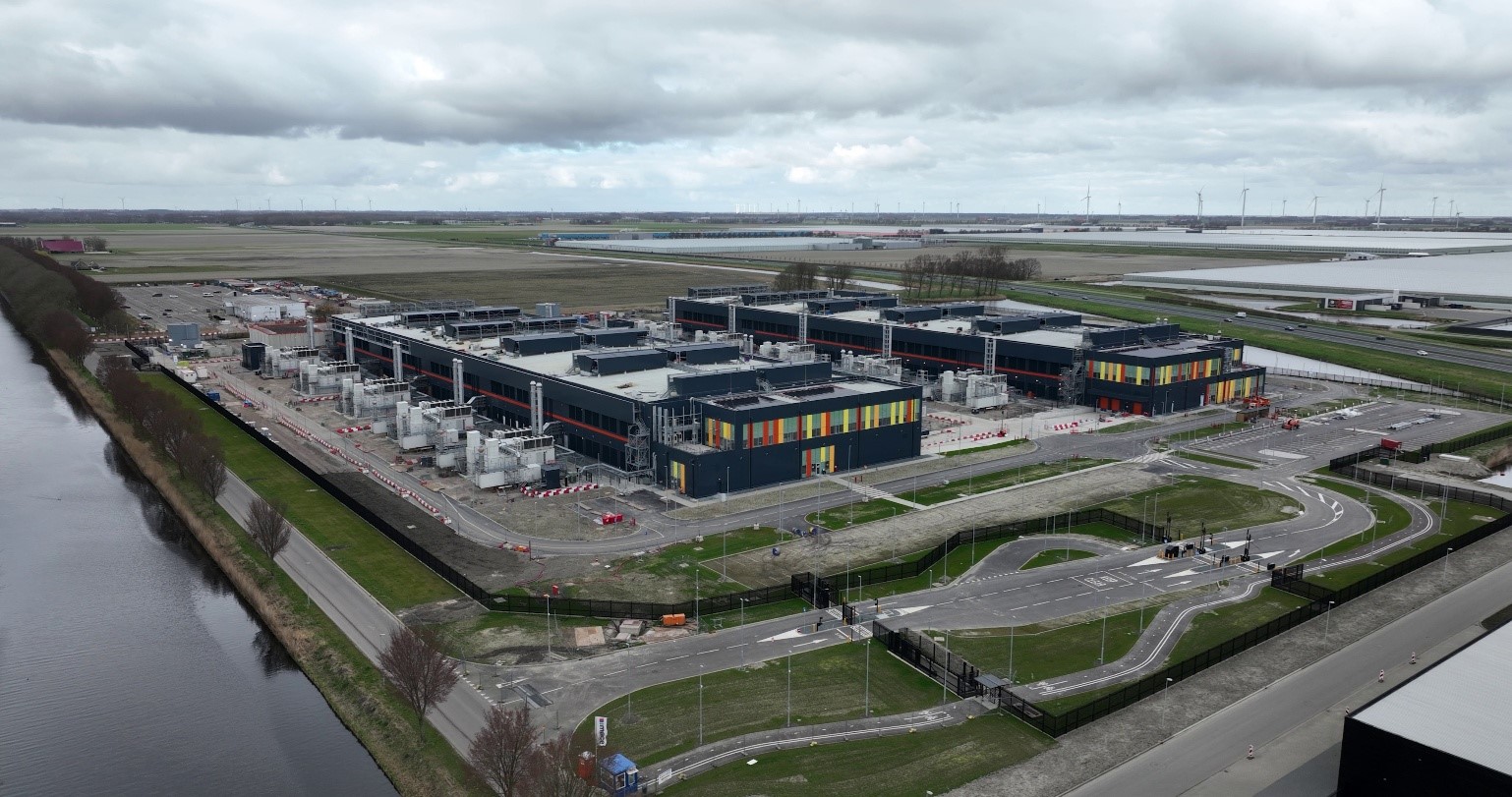Smarter Sustainability: Leveraging AI for Environmental Compliance
By Bodhi Hale, Director of Environmental Science/Technology (Tulsa)
Bodhi Hale’s passion for the environment was instilled in him at a very young age by his mother, whose work in horticulture exposed him early on to the beauty and complexity of the natural world. That early influence inspired him to pursue two bachelor’s degrees in environmental biology and Zoology at Oklahoma State University. Moreover, his directorial position with Vanguard continues to fuel his passion for environmental protection & compliance.
This article explores how artificial intelligence is transforming environmental compliance by automating monitoring, enhancing environmental reporting, and providing predictive insights that help organizations stay ahead of regulatory challenges. By bridging technology with environmental stewardship, AI offers tools to reduce risks, increase transparency, and support sustainability goals to scale. The goal of this writer is to emphasize the critical need to harness AI not as a replacement for human expertise, but as a partner in building smarter, more sustainable pathways for environmental responsibility.
Environmental compliance is becoming increasingly complex as regulations evolve, and industries face mounting pressure to reduce their environmental footprint. Artificial Intelligence (AI) provides transformative tools for managing compliance obligations, enhancing monitoring systems, predicting risks, and automating reporting processes. This article explores how AI can assist organizations in meeting environmental compliance requirements through practical applications, real-world examples, and an outlook on future opportunities.

Environmental compliance is the adherence to laws, regulations, and standards designed to protect ecosystems and public health. The landscape of compliance is challenging, largely because organizations must navigate a patchwork of local, national, and international requirements, all while managing vast amounts of environmental data. Manual approaches to monitoring, reporting, and regulatory tracking are often time-intensive and prone to human error. Artificial Intelligence offers new pathways by automating these processes, enhancing the accuracy of compliance activities, and enabling predictive insights that reduce the risk of violations.
What is AI and How Does It Apply to Environmental Compliance?
Artificial Intelligence refers broadly to computer systems that can perform tasks traditionally requiring human intelligence, such as recognizing patterns, processing language, learning from experience, and making decisions. AI is not a single technology but rather a collection of approaches, including machine learning, deep learning, natural language processing, and computer vision. These methods rely on algorithms that learn from data, adapt over time, and improve accuracy as they are exposed to new information.

When applied to environmental compliance, AI functions as an enabling technology that connects data streams, regulations, and operational decision-making. Compliance often involves tracking emissions, monitoring water or air quality, managing hazardous waste, and staying current with evolving regulatory frameworks. Each of these activities generates large volumes of structured and unstructured data, ranging from sensor readings to regulatory text. Traditionally, compliance officers or environmental managers must manually process this information, which is time-consuming and prone to error.
AI reduces this burden by automating repetitive tasks, enhancing accuracy, and uncovering insights that may be hidden in complex datasets. For instance, machine learning algorithms can identify abnormal emissions patterns more quickly than manual review of monitoring reports. Natural language processing can analyze regulatory documents to extract relevant obligations and translate them into actionable steps. Computer vision systems can sort recyclable materials or analyze satellite imagery for signs of noncompliance, such as illegal dumping or deforestation.
In this way, AI acts as both a safeguard and an accelerator. It safeguards organizations by detecting compliance risks early, reducing the likelihood of violations and penalties. At the same time, it accelerates progress by providing predictive insights that support sustainability initiatives, such as reducing greenhouse gas emissions or improving resource efficiency. Far from replacing human expertise, AI serves as a decision-support tool, freeing compliance professionals to focus on strategy, communication, and high-value problem solving.
AI in Monitoring and Reporting
One of the most immediate applications of AI in environmental compliance lies in the field of monitoring and reporting. Industrial facilities increasingly deploy networks of air, water, and soil sensors that produce continuous streams of data. AI algorithms can analyze this data in real time, identifying unusual patterns or pollutant levels that exceed regulatory thresholds. This capability reduces the delay between a compliance breach and the response, allowing organizations to take corrective actions before fines or enforcement actions occur.
Regulatory reporting is another area where AI proves beneficial. Natural language processing techniques can transform raw monitoring data into structured reports that align with state, federal, or international requirements. This minimizes the administrative burden on compliance teams and ensures a greater degree of consistency.
Predictive Analytics and Risk Prevention
AI not only responds to compliance risks but also helps anticipate them. Predictive models trained on historical emissions and operational data can forecast potential noncompliance events, such as a spike in greenhouse gas emissions or the likelihood of a spill. This forward-looking capability enables organizations to adjust their operations in advance, avoiding violations and improving overall environmental performance.
A strong example of this approach is found in the energy sector, where companies use AI to model combustion processes in power plants. By anticipating how operational conditions affect emissions, these companies can fine-tune their systems to remain within permitted limits. Predictive maintenance offers another layer of prevention. By analyzing data from pumps, valves, or treatment systems, AI tools can forecast mechanical failures that would otherwise lead to releases of pollutants. Companies such as Shell have invested heavily in these techniques to reduce leaks and spills in upstream oil and gas operations.
Remote Sensing and Satellite Applications
Satellite imagery and remote sensing technologies have opened a new frontier for compliance monitoring, and AI plays a central role in processing the massive volume of data they generate. Machine learning models can identify land use changes, deforestation, illegal mining, or unpermitted agricultural expansion from space. Global Forest Watch, for example, uses AI-powered analysis of satellite images to provide real-time alerts to governments and non-governmental organizations on deforestation activities.
Water quality monitoring also benefits from these advances. AI systems can detect indicators such as turbidity, algal blooms, or chemical contamination using satellite data, providing regulators and industries with timely insights. The European Space Agency has integrated AI into its Copernicus Sentinel program to monitor water quality across Europe, enabling more efficient compliance with water protection directives.

Regulatory Tracking with Natural Language Processing
One of the more subtle but equally important challenges in compliance is staying up to date with evolving regulations. Thousands of new environmental laws, rules, and amendments are published each year across different jurisdictions. Natural language processing provides a way to scan, categorize, and prioritize this information, flagging the changes most relevant to a particular company or industry.
Platforms such as Regology already employ these methods to help multinational corporations stay current with legal requirements. Beyond tracking, AI can also assist in interpreting regulatory language, translating complex provisions into operational steps that organizations can implement. This reduces the reliance on large legal teams and ensures that compliance officers can focus their attention where it is most needed.
Waste Management and Resource Efficiency
Waste management is another area where AI demonstrates its usefulness in supporting compliance. In recycling facilities, vision systems guided by AI can accurately identify and sort recyclable materials from mixed waste streams, improving recovery rates and reducing the likelihood that recyclable content ends up in landfills. This not only supports environmental goals but also helps companies meet recycling and diversion mandates. AMP Robotics has become a leader in this field, deploying AI-powered robotic sorting systems across multiple U.S. facilities.

Hazardous waste management poses an even greater compliance risk, given the strict cradle-to-grave regulations that govern its handling. AI systems can track the generation, transport, and disposal of hazardous waste, ensuring that no step in the process is overlooked. This type of automation helps reduce the likelihood of costly violations and supports greater accountability throughout the supply chain.
Case Studies
Coca-Cola has applied AI to optimize its water use across facilities worldwide, reducing consumption and predicting future scarcity risks. This work not only ensures compliance with local water use regulations but also supports broader sustainability commitments.
Mining giant Rio Tinto has integrated AI-powered drones and sensors into its operations to monitor air quality, tailings dams, and water discharges. These systems allow the company to comply with strict mining regulations and demonstrate transparency to regulators and stakeholders.
*A tailings dam is an engineered structure used to store waste materials produced from mining operations, specifically storing byproducts after the extraction of valuable minerals.
In California, the Air Resources Board has used AI-enabled satellite data to identify methane “super-emitters” in oil and gas operations. These insights have supported enforcement actions and provided a new level of accountability for emissions that previously went undetected.
Environmental Impacts of AI
While AI offers significant benefits for environmental compliance and sustainability, it is not without its own environmental footprint. The development, training, and operation of AI models, especially large-scale machine learning and deep learning systems require substantial amounts of computational power. This translates to high energy consumption, which, depending on the energy source, can contribute to greenhouse gas emissions. For example, training a single large AI model can emit as much carbon as several cars do over their lifetimes, highlighting the hidden environmental cost of advanced AI technologies.
In addition to energy demands, AI infrastructure often relies on extensive data centers, which require cooling systems, physical space, and significant resource inputs to operate efficiently. The manufacturing and disposal of the hardware that supports AI servers, GPUs, and other computing equipment also contribute to electronic waste and resource depletion.
Moreover, the rapid adoption of AI can encourage industries to rely on high-frequency monitoring and massive data collection, which increases energy consumption further. Without careful management, these factors can undermine some of the sustainability gains that AI provides in environmental compliance.
To mitigate these negative effects, organizations can adopt strategies such as using renewable energy to power data centers, optimizing AI models for energy efficiency, and reusing or recycling hardware components. Balancing AI’s environmental benefits with its energy and resource demands is essential for ensuring that AI truly supports sustainable development rather than inadvertently adding to environmental pressures.

Challenges and Future Outlook
Despite the advances AI brings to environmental compliance, several challenges remain. One major concern is data quality, as inaccurate or incomplete datasets can reduce the reliability of AI predictions. The cost of implementation is another barrier, especially for small and medium-sized enterprises. Regulators may also hesitate to rely on AI-generated outputs unless algorithms are transparent and explainable, which makes the development of explainable AI a critical priority.
At the same time, AI itself has environmental impacts that cannot be ignored. Training and operating large-scale AI models consumes significant energy, and the hardware required servers, GPUs, and cooling systems contributes to resource use and electronic waste. As organizations increase reliance on AI for monitoring and reporting, the energy demands and associated carbon footprint can grow substantially, potentially offsetting some of the environmental gains achieved through improved compliance.
Emerging technologies like blockchain and IoT devices can complement AI by improving transparency and enabling real-time monitoring. Blockchain offers a secure, tamper-proof way to track compliance data, while IoT sensors collect continuous environmental measurements, allowing AI systems to respond proactively to risks. Combining these technologies thoughtfully, and powering them with renewable energy where possible, can help mitigate the environmental costs of AI while maximizing its benefits for sustainability.
*IoT devices are smart objects that can react automatically to data. Such devices are connected to the Internet and can communicate with each other. For example, a smart thermostat can monitor the temperature of a living area or workspace and adjust the heating or cooling system automatically.
Artificial intelligence has the potential to transform environmental compliance by automating monitoring, improving reporting accuracy, predicting risks, and enhancing sustainability initiatives. Real-world applications from AI-powered satellite monitoring of deforestation to predictive maintenance in industrial facilities demonstrate its practical value.
However, it is important to recognize that AI is not inherently “green.” The energy demands of large models, the resources needed for data centers, and the generation of electronic waste all pose environmental challenges that must be addressed alongside its benefits. By combining AI with energy-efficient practices, renewable power, IoT monitoring, and secure blockchain record-keeping, organizations can harness AI as a tool for compliance and sustainability without inadvertently increasing their environmental footprint.
Ultimately, achieving smarter sustainability requires a balanced approach: leveraging AI to enhance compliance while actively managing and minimizing the environmental costs of the technology itself.